Move beyond static credit scores. See how predictive analytics helps lenders anticipate risk, strengthen compliance, and make smarter, data-driven decisions.
The current economic climate is putting significant pressure on lenders. Reports from S&P and TransUnion show that auto loan delinquencies have surged to their highest levels since the 2008 recession. While this trend is most evident in the auto lending sector, it signals emerging vulnerabilities across the broader credit market. This also highlights the need to strengthen risk models across all lending portfolios.
In this volatile environment, traditional risk assessment methods, which rely heavily on static factors like credit scores and income history, are proving to be reactive and inadequate. They are good at telling you “where a borrower has been”, but offer little insight into “where they are headed.”
In this blog, we explore five impactful ways predictive analytics and AI are transforming loan portfolio management and how they are helping lenders anticipate risk, enhance decision-making, and build more resilient portfolios.
1. Continuous Loan Monitoring to Close the Risk Visibility Gap
The traditional lending lifecycle places immense focus on risk assessment at the point of origination. But once a loan is disbursed, many lenders shift their attention to servicing and collections, effectively losing visibility into the borrower’s evolving financial health.
This creates a critical blind spot.
Post-funding cash flow analytics closes this gap. By continuously monitoring transactional data, predictive models can detect subtle but significant early warning signs of distress, such as,
- Erratic cash flow patterns, which may signal a shift from stable W-2 employment to less predictable gig work.
- Income instability or sudden drops in account balances, which could indicate a major, unplanned expense like a medical emergency, putting immediate pressure on repayment capacity.
- Irregular payment behaviors on other credit lines.
This shift to continuous monitoring moves you from reacting to defaults to proactively shaping portfolio outcomes. Instead of scrambling after a delinquency occurs, you can identify financial stress as it develops, surface renewal opportunities with healthy borrowers, and mitigate risk long before an account is in jeopardy.
2. Using Behavioral and Alternative Data for Smarter Lending Decisions
While traditional credit scores remain a foundational element of underwriting, they are static, often outdated snapshots of a borrower’s past. Predictive analytics creates a far more dynamic and complete picture by incorporating a vast array of modern, alternative data sources that reflect a borrower’s real-time behavior.
This isn’t just about more data; it’s about smarter data. App usage, for example, can differentiate between a borrower using a budgeting app (a positive signal) and one frequenting online gambling sites (a critical risk indicator). A predictive model can analyze shifts in spending patterns, drops in account balances, or changes in digital engagement to get a current, forward-looking view of creditworthiness.
This approach is powered by more sophisticated machine learning-based credit risk scoring models. Studies have shown that algorithms like Random Forest, XGBoost, and neural networks are significantly better at predicting defaults than traditional logistic regression. In fact, research demonstrates that artificial neural networks can improve default prediction rates by as much as 20% over classical methods.
3. Building Transparency and Compliance into Predictive Risk Models
As predictive models become more complex, they can also become more opaque. Advanced algorithms like deep neural networks can function as a “black box,” making it nearly impossible to understand why a specific decision was made. For a bank or lending institution, this inscrutability is not just a technical issue—it’s a major business and compliance liability. Imagine a regulator asking why a loan application from a protected class was denied. A “black box” model offers no defensible answer, creating significant legal and reputational risk.
Because of this, modern lenders must invest in “explainable AI” (XAI). Tools like SHAP (SHapley Additive exPlanations) and LIME (Local Interpretable Model-agnostic Explanations) are designed to improve model risk management, providing clear insights into which factors influenced a particular outcome.
In a highly regulated industry, a transparent and explainable model is often far more valuable than a slightly more accurate but completely opaque one.
4. Predictive Analytics for Loan Default Prevention
The primary goal of predicting delinquency is not to flag an account for aggressive collections. The more effective modern strategy is to use early warning signals to engage with at-risk borrowers preemptively and constructively.
Instead of waiting for a borrower to default, predictive insights enable lenders to offer timely support and solutions. These proactive interventions can include:
- Offering flexible repayment plans or loan modifications.
- Providing financial education resources or information on credit counseling services.
- Initiating personalized, supportive communication to understand the borrower’s situation and help.
This preventative approach is not merely theoretical. Consider a practical application, such as one regional bank used a data analytics solution to achieve 93% accurate prediction of vulnerable small business borrowers. By preemptively restructuring these loans, the bank avoided defaults and achieved a notable reduction in critical loans within six months. This approach reduces defaults, strengthens portfolio performance, and fosters more resilient, trust-based relationships with borrowers.
5. The ROI of AI in Loan Risk Management from Real-World
While “AI” can sometimes sound like a speculative buzzword, its application in credit risk management delivers measurable, bottom-line returns. Leading financial institutions are already achieving significant gains in both efficiency and accuracy by deploying predictive analytics.
Here are a few data-backed examples:
These efficiency gains are a recurring theme. As one report highlights, the operational benefits are substantial:
| Bank / Institution | AI Application Area | Key Outcomes / Metrics | ROI or Business Impact |
| HSBC | Anti-Money Laundering (AML) | • 2–4× more true positives
• ~60% reduction in alert volumes |
Improved detection accuracy and reduced compliance workload |
| Danske Bank | Fraud Detection | • ~60% fewer false positives
• +50% increase in true-fraud detection |
Stronger fraud defense and more efficient investigations |
| J.P. Morgan | Cash-Flow Forecasting | • ~50% reduction in manual work
• ~$100K annual savings in treasury operations |
Increased automation efficiency and cost savings |
| BBVA | Loan Delinquency Prediction & Remediation | • Predicts delinquency risk
• Tailors recovery strategies using machine learning |
Optimized risk management and improved recovery outcomes |
These cases prove that investing in predictive analytics is a proven strategy for reducing operational costs, improving the precision of risk management, and driving tangible financial results.
Conclusion
Risk management is no longer a static, front-end decision but a continuous, dynamic process that relies on both historical scores and real-time behavioral data. As predictive analytics becomes the new industry standard, the question for lenders is shifting from if they will adopt these tools to how they will implement them to stay competitive.
Anaptyss empowers financial institutions to embrace this transformation through data-driven, AI-powered risk management solutions that enhance accuracy, agility, and compliance.
To learn more or connect with our experts, reach out at info@anaptyss.com.



